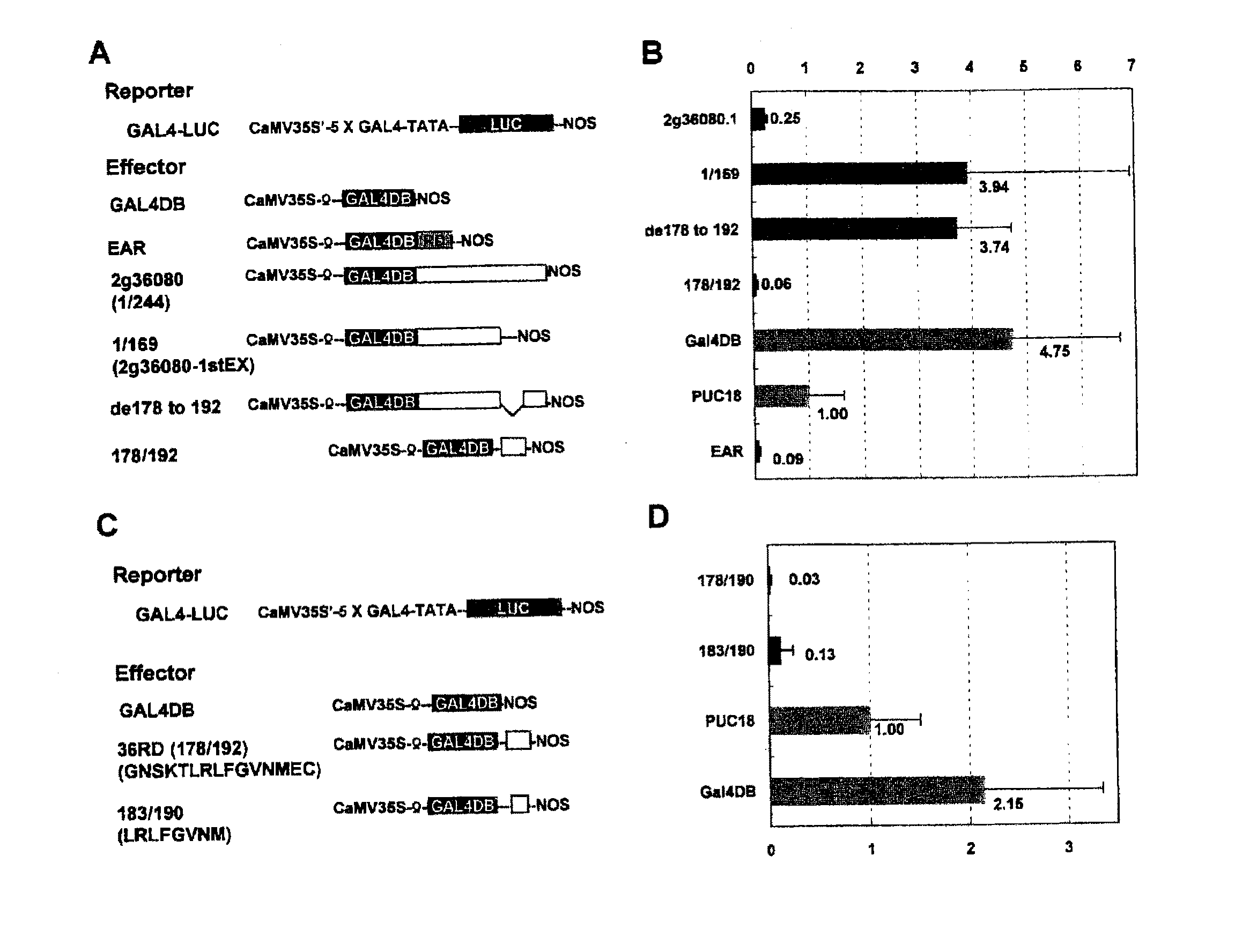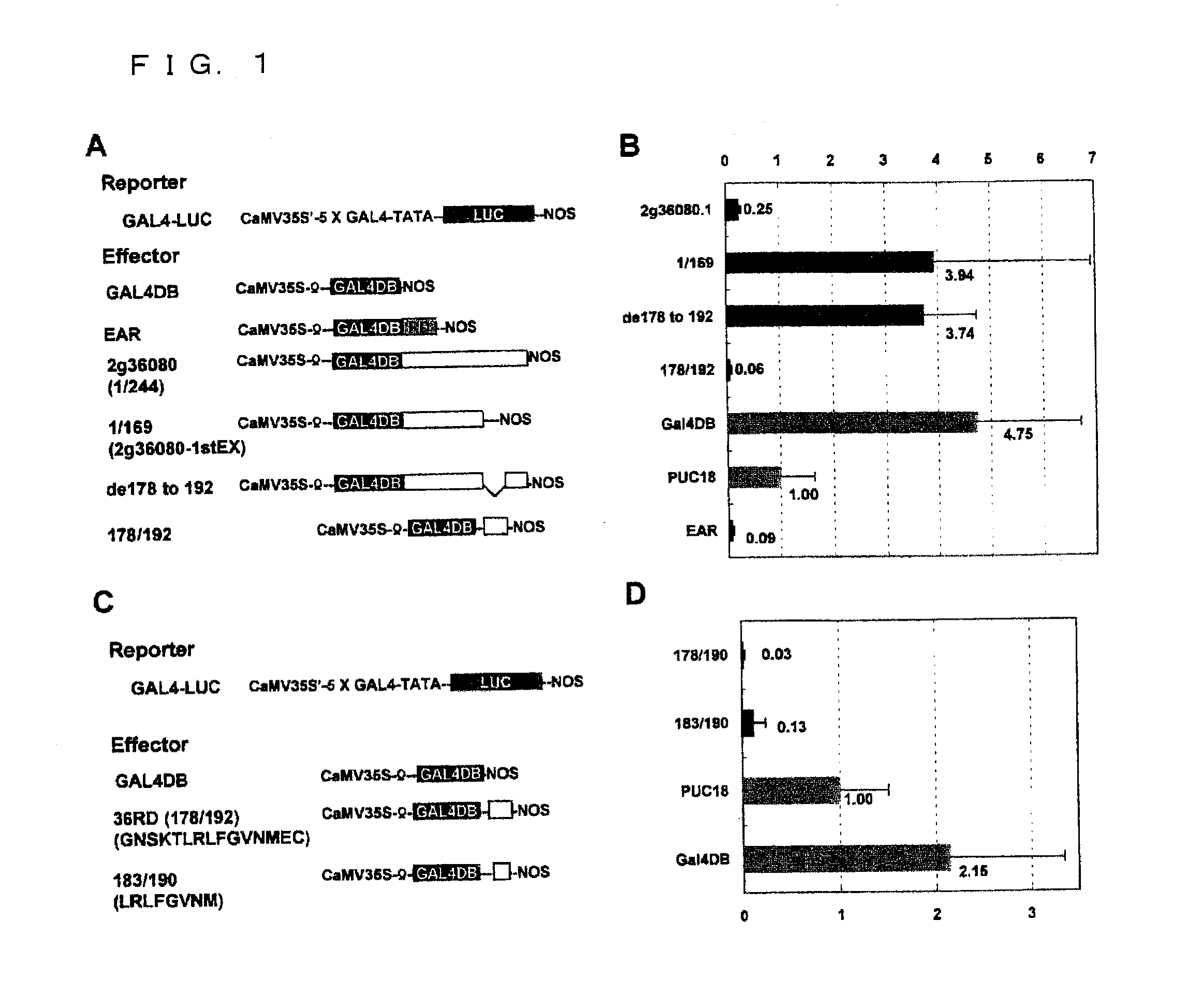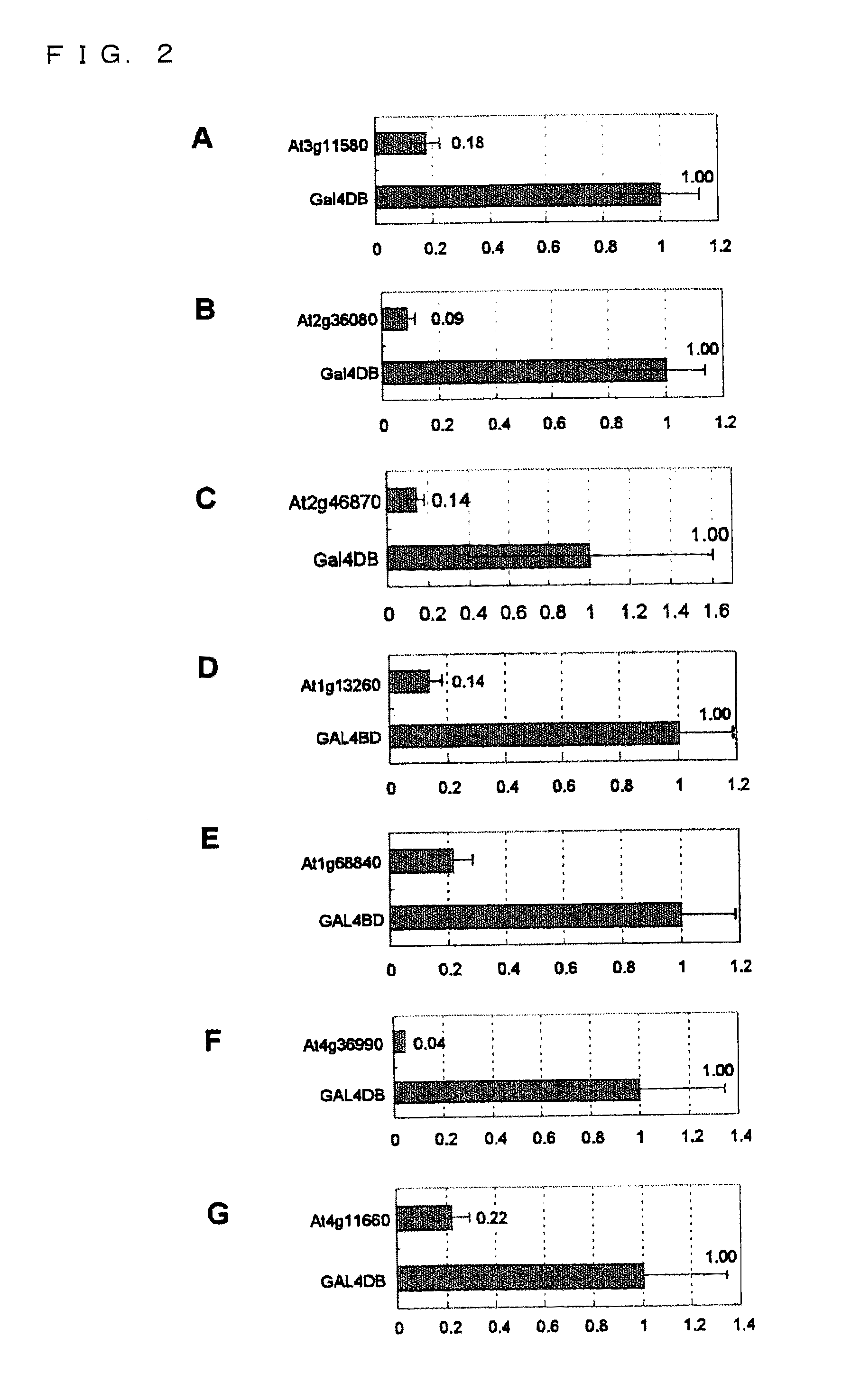Transcriptional repressor peptides and genes for the same
a transcriptional repressor and gene technology, applied in the direction of peptides, peptide/protein ingredients, immunoglobulins, etc., can solve the problems of inability to use antisense dna or rna to repress expression of genes other than the target gene, loss of ribozyme activity, and difficulty in designing appropriate antisense dna or rna or appropriate ribozyme, so as to effectively suppress the transcription o
- Summary
- Abstract
- Description
- Claims
- Application Information
AI Technical Summary
Benefits of technology
Problems solved by technology
Method used
Image
Examples
example 1
Transcriptional Repression by Effector Plasmid Including At2g36080 Gene
[0117](1-1) Construction of Vector p35S-GAL4 DBD for Effector Plasmid
[0118]Plasmid pBI221 (available from Clontech, the U.S.A.) was cleaved with restriction enzymes XhoI and SacI, and was then blunt-ended with T4 polymerase. Thereafter, GUS gene was removed therefrom through agarose gel electrophoresis, so as to obtain a 35S-Nos plasmid DNA fragment including the cauliflower mosaic virus 35S promoter (hereafter referred to as “CaMV 35S”) and the transcription termination region of a nopaline synthase gene (Nos terminator, hereafter referred to as “Nos-ter”).
[0119]Next, pAS2-1 vector (available from Clontech) was digested with restriction enzyme HindIII, and a 748-bp DNA fragment encoding the DNA-binding domain (the amino acid residues 1-147) of the yeast GAL4 protein (hereafter referred to as “GAL4 DBD”) was isolated therefrom through agarose gel electrophoresis. Then, the DNA fragment thus isolated was blunt-end...
example 2
Identification of Peptide Serving as Repression Domain
[0152](2-1) Construction of Effector Plasmid pGAL4-183 / 192 Including Nucleotide Sequence Encoding Region 183-192 of Amino Acid Sequence Encoded by At2g36080
[0153]Oligonucleotides were synthesized so as to include sequences corresponding to (i) a partial sequence 3 of At2g36080 gene (SEQ ID NO: 45, corresponding to the region 547-576 in the nucleotide sequence of At2g36080 gene): TTAAGACTGTTCGGAGTGAACATGTAA, and (ii) a partial sequence 4 (SEQ ID NO: 46, corresponding to the sequence complementary to the region 547-576 in the nucleotide sequence of At2g36080 gene): TTACATGTTCACTCCGAACAGTCTTAA, respectively. Note that the partial sequence 3 was designed so as to be in frame with GAL4 DBD, and the partial sequence 4 was a complementary sequence of the partial sequence 3. These oligonucleotides were mixed together. The resulting mixture was heated at 90° C. for two minutes, and was then heated at 60° C. for an hour. Thereafter, the mi...
example 3
Transcriptional Repression by Effector Plasmid Including Gene Including Nucleotide Sequence Encoding Amino Acid Sequence R / KLFGV
[0162](3-1) Construction of Effector Plasmids
[0163](3-1-1) Construction of Effector Plasmid pGAL4-At3g11580 Including Entire Protein-Coding Region of At3g11580 Gene
[0164]Oligonucleotides were synthesized so as to include sequences corresponding to the sequences on the respective 5′- and the 3′-ends of the protein-coding region of At3g11580 gene of Arabidopsis thaliana, whose nucleotide sequence has already been reported. One of the oligonucleotides included a sequence corresponding to a 5′-upper primer of At3g11580 gene (SEQ ID NO: 47, corresponding to the region 1-29 in the nucleotide sequence of At3g11580 gene): gATGTCAGTCAACCATTACCACAACACTCT. Note that the 5′-upper primer was designed so as to be in frame with GAL4 DBD. The other of the oligonucleotides included a sequence corresponding to a 3′-lower primer (SEQ ID NO: 48, corresponding to the region 782...
PUM
| Property | Measurement | Unit |
|---|---|---|
| temperature | aaaaa | aaaaa |
| lengths | aaaaa | aaaaa |
| width | aaaaa | aaaaa |
Abstract
Description
Claims
Application Information
 Login to View More
Login to View More - R&D
- Intellectual Property
- Life Sciences
- Materials
- Tech Scout
- Unparalleled Data Quality
- Higher Quality Content
- 60% Fewer Hallucinations
Browse by: Latest US Patents, China's latest patents, Technical Efficacy Thesaurus, Application Domain, Technology Topic, Popular Technical Reports.
© 2025 PatSnap. All rights reserved.Legal|Privacy policy|Modern Slavery Act Transparency Statement|Sitemap|About US| Contact US: help@patsnap.com



